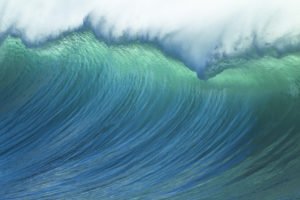Japanese researchers say they have found a link between high tide and large earthquakes, which could indicate a greater likelihood of earthquakes following the new or full moon.
 The researchers reconstructed the size of tidal stress from the two weeks prior to earthquakes of magnitude 5.5 or higher over the past 20 years and say large earthquakes – like the 2011 Tohoku earthquake – occurred at times of high tidal stress.
The researchers reconstructed the size of tidal stress from the two weeks prior to earthquakes of magnitude 5.5 or higher over the past 20 years and say large earthquakes – like the 2011 Tohoku earthquake – occurred at times of high tidal stress.
The article is available on scimex.org.
The SMC collected the following expert commentary. Feel free to use these quotes in your reporting.
Associate Professor John Townend, Head of School of Geography, Environment, and Earth Sciences, Victoria University of Wellington, comments:
“The authors have examined two things: the timing of large earthquakes in relation to the strengths of tidal stress perturbations (“tidal loading”); and (b) the ratios of large to small earthquakes for different levels of tidal loading. They interpret their results in terms of the likelihood of a small earthquake growing (cascading) into a large one being dependent on the strength of tidal loading. According to their analysis, small earthquakes are more likely to evolve into large earthquakes when tidal loads are higher (i.e. during Spring tides after new or full moons). Their analysis also suggests that it’s the magnitude, or size, of the tidal loading rather than the phase, or time since the new moon, that’s important.
“This research has important implications from the seismic hazard point of view as it suggests that large earthquakes are more likely at times of high tidal loading. However, given how small the tidal stresses are in relation to the total stresses acting on faults and given that the conditions required to cause a specific fault to break aren’t known, the results of this study do not enable scientists to calculate when or where a particular fault will rupture or how big the resultant earthquake will be.”
Mark Quigley, Associate Professor, active tectonics and geomorphology, University of Melbourne, comments:
“Tanaka and colleagues have been working on this problem for many years and have published some nice theories. But I remain unconvinced that the timing and characteristics of large earthquakes clearly correlate to lunar cycles or tidal stresses, nor do I think potentially tidally triggered seismicity has any real practical utilization in the context of coastal seismic hazard and public safety. Here is why.
“The Tohoku earthquake occurred on March 11, 2011. There was a new moon onMarch 4th, a quarter moon on the 12th, and a full moon on the 19th. So this timing is exactly the opposite of what one would expect if the timing of this earthquake was associated with full or new moons. Ide et al acknowledge this lack of temporal correlation in their paper.
“The tidal shear stresses Ide et al estimate, resolved on to the fault plane that ruptured in the Tohoku earthquake, were higher in the 30 days both before and after the occurrence of the Tohoku earthquake. So there is not a clear correlation between the peak tidal shear stress and the timing of earthquake nucleation.
“Perhaps more importantly, these tidal stress changes are also very small (less than +/- 0.3 kPa) compared to the stress changes that occur at the front of a propagating earthquake rupture, which may be several MPa. In other words, earthquake-induced stress changes at the front of a propagating rupture are probably 1000 to 10,000 times greater than tidal ones.
“Interestingly, there was a magnitude 7.2 earthquake two days before the Tohoku earthquake, with a rupture plane that was very close to the nucleation point of the Tohoku earthquake. This event also did not correlate with a full moon or any anomalous tidal stresses. The static and dynamic stresses induced by this foreshock on the Tohoku earthquake hypocentral region would have greatly exceeded any sort of tidal effect. A seismic hazard warning on the basis of this foreshock would have had more scientific justification than one based on the approaching full moon (8 days after the Tohoku earthquake actually occurred) or tidal stress perturbations.
“Ide et al also suggest that the magnitude frequency distributions of earthquakes from some settings show some sort of correlation with tidal stresses. I cannot evaluate this hypothesis fully, but I can say that this relationship is least convincing in the setting I consider is most analogous to the Canterbury region (California), where the ‘b values’ (binned by tidal shear stress) are essentially within error across the spectrum of lunar-induced tidal stresses.
“It is important to recognize that I am not saying that tidal stresses are unimportant things to consider within the variety of processes that may influence earthquake behaviour. But when we consider how such a phenomenon could be practically considered within a coastal hazard perspective, what is the recommendation here? That we stay away from beaches close to subduction zones on full moons? This certainly would not have helped in the Tohoku example.
“Many countries like Japan have earthquake early alarm systems, seismic building codes, well-engineered sea walls, and evacuation strategies in place; these are the measures that help to reduce seismic and tsunami risk.
“There were definitely some shortcomings (e.g., inadequate sea wall heights to deal with a larger than estimated tsunami wave height, coastal land development in high hazard regions, the Fukushima Daiichi nuclear disaster), but certainly we are not so naïve to think that the solution to these sorts of problems lies in the extraction of a tidal signal from seismicity. With fairness, Ide et al do not claim to do this in their study.”